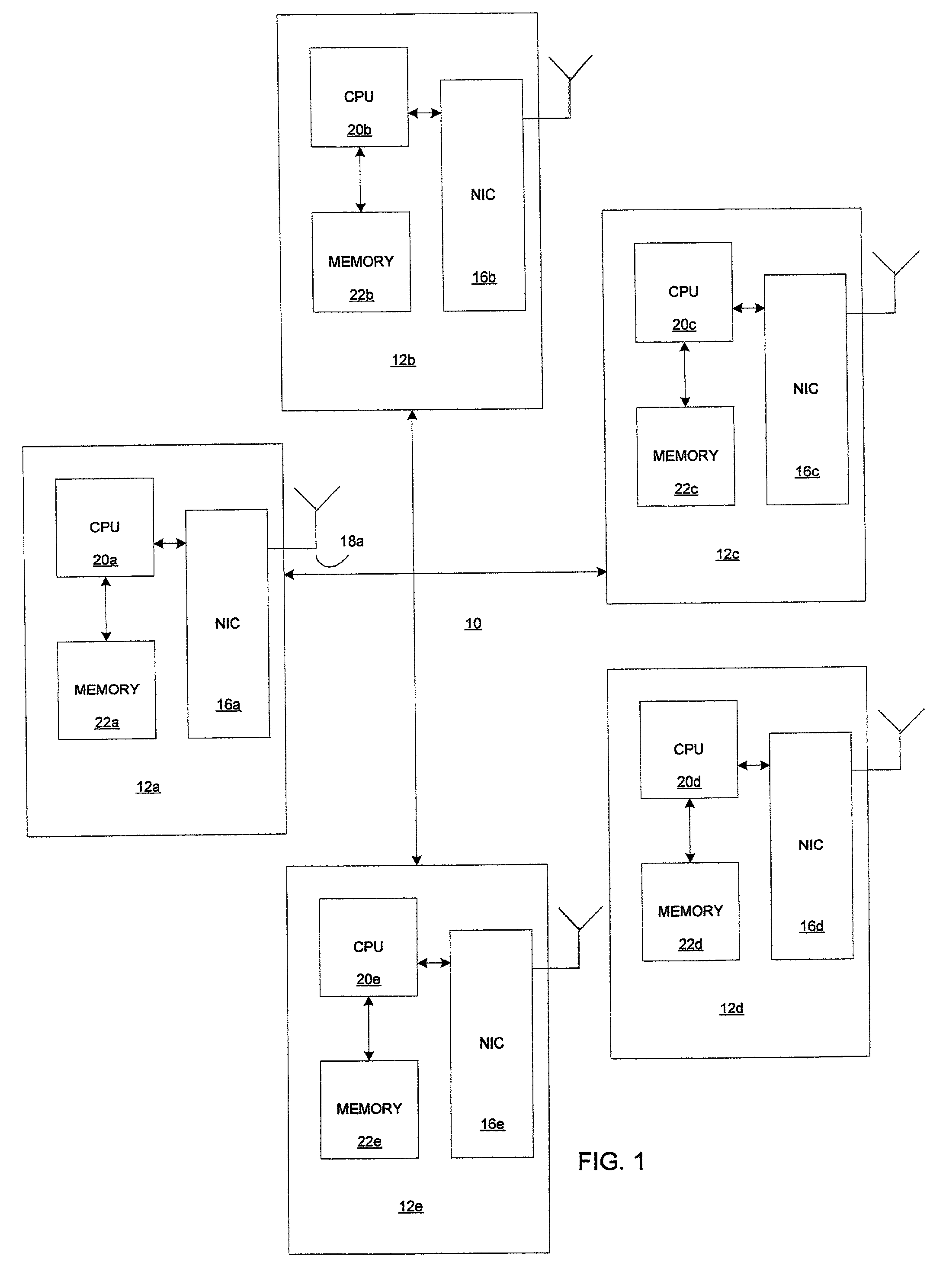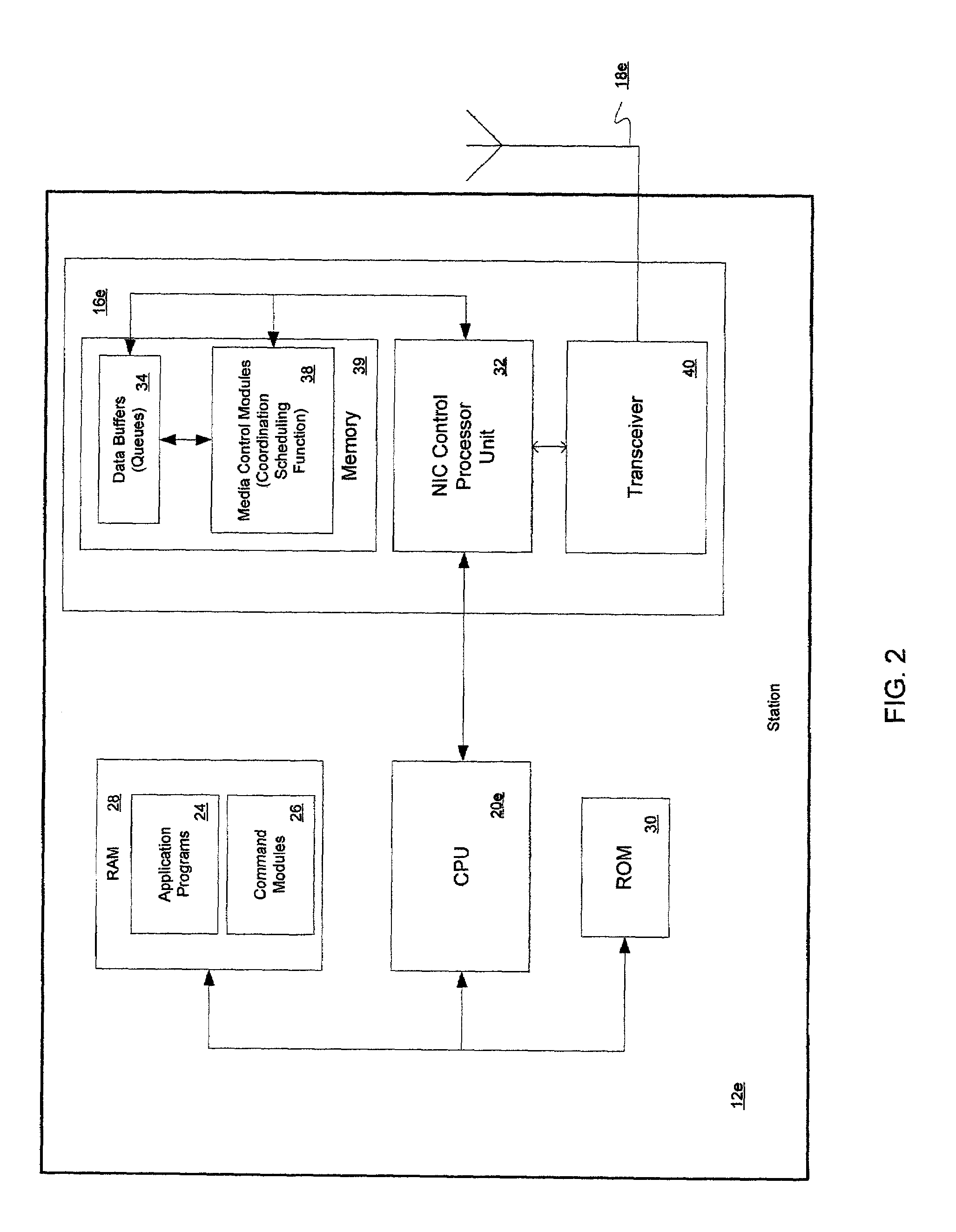System and method for ordering data messages having differing levels of priority for transmission over a shared communication channel
- Summary
- Abstract
- Description
- Claims
- Application Information
AI Technical Summary
Benefits of technology
Problems solved by technology
Method used
Image
Examples
Embodiment Construction
[0017]Initially, it should be noted that it may be desirable to increase the probability of successful transfer of (MSDUs) across a shared channel such, for example, as the wireless medium employed by the illustrative embodiment of the present invention. In such cases, message data units can be partitioned into a sequence of smaller data units prior to transmission. The process of recombining a set of fragment data units into an MSDU is known as defragmentation. For the purposes of the present specification, the terms message data units are intended to encompass each of the aforementioned units, as well as any other units, which can be transmitted and received as delimited frames of digital bits.
[0018]An illustrative embodiment of a communication network 10 employing the teachings of the present invention is shown in FIG. 1 and includes a plurality of stations—generally indicated at 12a–12e—that are configured to receive and transmit message units over a shared communication medium....
PUM
 Login to View More
Login to View More Abstract
Description
Claims
Application Information
 Login to View More
Login to View More - R&D
- Intellectual Property
- Life Sciences
- Materials
- Tech Scout
- Unparalleled Data Quality
- Higher Quality Content
- 60% Fewer Hallucinations
Browse by: Latest US Patents, China's latest patents, Technical Efficacy Thesaurus, Application Domain, Technology Topic, Popular Technical Reports.
© 2025 PatSnap. All rights reserved.Legal|Privacy policy|Modern Slavery Act Transparency Statement|Sitemap|About US| Contact US: help@patsnap.com



